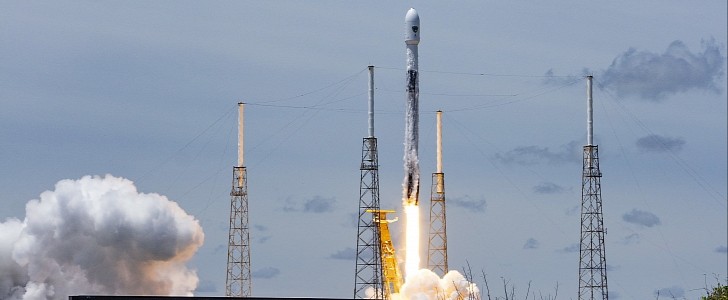Virtual training platforms integrating the latest simulation technology have recently become a part of the U.S. military, used for providing the most realistic conditions for war scenarios. Now, a similar concept will be applied to space security. An industry-first space digital twin and a state-of-the-art immersive space education platform are about to help the U.S. Space Force (USSF) reach whole new levels of performance.
Although the space tourism revolution seems to be portraying space as an otherworldly amusement park where it’s all fun and games, the world’s most powerful governments are only increasing the resources dedicated to space security, reminding us that threats and risks are lurking at every “corner.”
Now, imagine the most thrilling space game, where you would be able to plan security operations in detail, launch satellite constellations, and craft response scenarios for dangerous events such as an unknown object approaching a satellite.
This is the basic idea of what USSF will be able to do with the help of the Digital Space Twin, except that it will all be meant for real-world operations. This groundbreaking tool developed by Slingshot Aerospace aims to be an accurate reflection of the current state of space, at any moment. It combines real-time mapping of objects in orbit, advanced space weather data, and physics-based simulations.
USSF personnel will be able to see exactly how planned missions will unfold in real space, before actually conducting them. This way, they can predict future enemy behavior in orbit, or they can determine the safest and most effective way of deploying satellites by simulating multiple launch scenarios.
Launched only five years ago, Slingshot Aerospace has been developing the Digital Space Twin for the past couple of years. It claims to be the first of its kind in the industry and was recently selected by USSF’s Space Systems Command. A new contract worth more than $25 million was awarded to the company with headquarters in Austin, Texas, and Los Angeles, California, for developing a custom version of this game-changing tool.
And that’s not all. USSF will also use the Slingshot Laboratory, another pioneering space simulation platform, for education. Students will get the chance to become “masters” of their own virtual environments, in order to fully grasp advanced concepts of astrodynamics. The company will help implement pilot programs for several education organizations, including the National Security Space Institute (NSSI).
Now, imagine the most thrilling space game, where you would be able to plan security operations in detail, launch satellite constellations, and craft response scenarios for dangerous events such as an unknown object approaching a satellite.
This is the basic idea of what USSF will be able to do with the help of the Digital Space Twin, except that it will all be meant for real-world operations. This groundbreaking tool developed by Slingshot Aerospace aims to be an accurate reflection of the current state of space, at any moment. It combines real-time mapping of objects in orbit, advanced space weather data, and physics-based simulations.
USSF personnel will be able to see exactly how planned missions will unfold in real space, before actually conducting them. This way, they can predict future enemy behavior in orbit, or they can determine the safest and most effective way of deploying satellites by simulating multiple launch scenarios.
Launched only five years ago, Slingshot Aerospace has been developing the Digital Space Twin for the past couple of years. It claims to be the first of its kind in the industry and was recently selected by USSF’s Space Systems Command. A new contract worth more than $25 million was awarded to the company with headquarters in Austin, Texas, and Los Angeles, California, for developing a custom version of this game-changing tool.
And that’s not all. USSF will also use the Slingshot Laboratory, another pioneering space simulation platform, for education. Students will get the chance to become “masters” of their own virtual environments, in order to fully grasp advanced concepts of astrodynamics. The company will help implement pilot programs for several education organizations, including the National Security Space Institute (NSSI).






